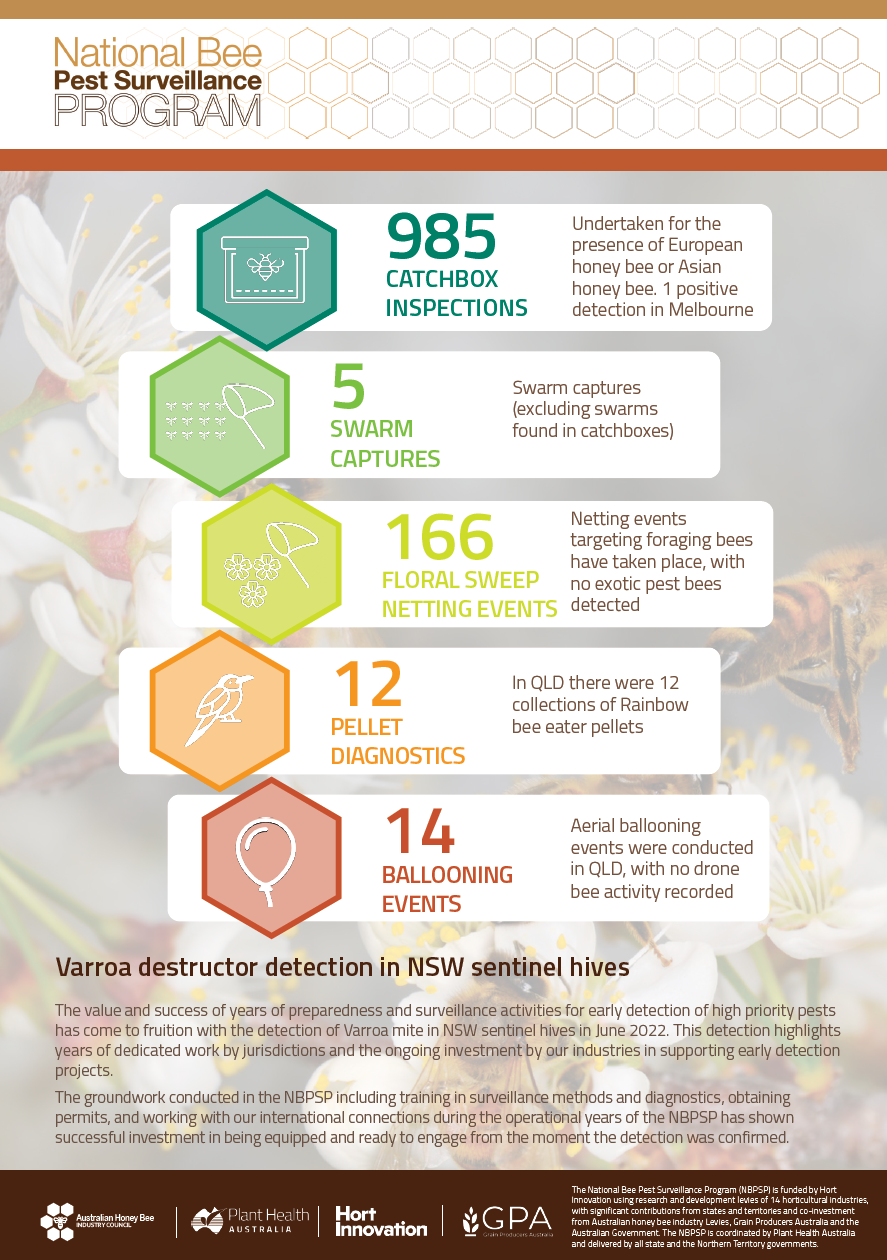National Bee Pest Surveillance Program
19 July 2023The National Bee Pest Surveillance Program (NBPSP) is a risk-based program undertaking surveillance at ports that have been evaluated as the highest risk of entry and establishment of European or […]
The National Bee Pest Surveillance Program (NBPSP) is a risk-based program undertaking surveillance at ports that have been evaluated as the highest risk of entry and establishment of European or Asian honey bees and the exotic bee mites they carry.
This risk-based approach is designed to provide early detection through activities occurring at high-risk locations and at a frequency that will detect new pests. This provides the best chance of eradication or containment of pests before they have a chance to spread widely in bee populations and impact pollination services.
The NBPSP involves a range of equipment, tools, activities, and diagnostic techniques to target and provide early detection of the nine high priority exotic bee pests, including Varroa mite, Tropilaelaps mite and Tracheal mite.
Program funding
The National Bee Pest Surveillance Program (NBPSP) is funded by Hort Innovation using research and development levies of 14 horticultural industries, with significant contributions from states and territories and co-investment from Australian honey bee industry Levies, Grain Producers Australia and the Australian Government.
The NBPSP is coordinated by Plant Health Australia and delivered by all state and the Northern Territory governments.
Surveillance infographics
In 2022 the NBPSP performed surveillance activities at 22 locations throughout Australia. A total of 3,287 surveillance activities targeting exotic bee pests and exotic pest bees were conducted.

